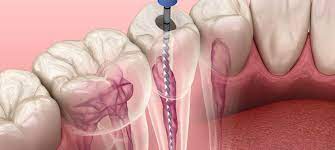Introduction
There’s no need to be nervous about root canal therapy. It’s a common procedure that dentists perform to save a tooth that’s become infected or damaged. Root canal therapy is also called endodontic treatment.
The dentist removes the damaged or infected tissue inside the tooth during root canal therapy. The tooth is then cleaned and sealed. Root Canal Therapy Bicuspid is usually successful. But in some cases, the infection can come back.
What is Root Canal Therapy?
Root canal therapy is a treatment to repair and save a tooth that is badly decayed or infected. During root canal therapy, the nerve and pulp are removed, and the inside of the tooth is cleaned and sealed.
Without treatment, the tissue surrounding the tooth will become infected, and abscesses may form.
Moreover, root canal therapy is needed when the nerve of a tooth is affected by decay or infection. The dentist must remove the damaged or infected nerve tissue to save the tooth.
After the nerve tissue is removed, the tooth will be cleaned and sealed.
Bicuspid Root Canal Therapy
Bicuspid root canal therapy is a type of root canal therapy that is used to treat a tooth that has two roots. The procedure is similar to standard root canal therapy, but it may be more challenging to perform because of the complex anatomy of a bicuspid tooth.
The dentist will remove the damaged or infected nerve tissue from both tooth roots during this therapy. The tooth will then be cleaned and sealed. Sometimes, a bicuspid tooth is removed if the root canal therapy is unsuccessful.
The benefit of Bicuspid Root Canal Therapy
Some benefits of bicuspid root canal therapy include the following:
Relief from Pain & Discomfort
This therapy can relieve the pain and discomfort associated with an infected tooth.
Preservation of the Natural Tooth
It can help to preserve the natural tooth by preventing it from needing to be extracted.
Prevention of Further Tooth Damage
This type of root canal therapy can help to prevent further damage to the tooth by removing the infection and protecting the tooth from further decay.
Improvement in Oral Health
Bicuspid root canal therapy can help to improve oral health by preventing the spread of infection and decay to other teeth.
Time-Saving
Instead of multiple visits to the dentist for tooth extraction and replacement, it can be completed in one or two visits.
Convenient
It is usually more convenient than tooth extraction and replacement because it can be done during regular dental visits and does not require a separate surgery.
Symptoms of Tooth that Needs Root Canal Therapy
Several symptoms may indicate that a tooth needs root canal therapy. These symptoms may include severe tooth pain, especially when chewing or applying pressure to the tooth; tooth sensitivity to hot, cold, or sweet foods and drinks; gum tenderness or swelling; and a small, pimple-like bump on the gums.
If you experience any of these symptoms, you should see a dentist as soon as possible.
Risks
Root canal therapy is a safe and effective procedure. However, like any medical procedure, there are some risks. The most common complication is a small crack in the tooth. This can happen during the procedure or after the tooth has been sealed.
Another risk is that the infection may come back. It is more likely to happen if the root canal therapy is not performed correctly. If the infection does come back, you may need another root canal, or you may need to have the tooth removed.
What should I Expect During Root Canal Therapy?
Root canal therapy is usually performed by a dentist or an endodontist (a dentist who specializes in root canal therapy). The procedure is generally performed in one or two visits.
The dentist will numb the tooth and surrounding area during the first visit with local anesthesia. The dentist will then make a small opening in the tooth.
Next, the dentist will remove the damaged or infected nerve tissue. The tooth will then be cleaned and sealed. In some cases, a temporary filling will be placed in the tooth.
During the second visit, the dentist will remove the temporary filling and place a permanent filling or a crown (cap) on the tooth.
After root canal therapy, taking care of your teeth is essential. You should brush and floss your teeth regularly and see your dentist for regular checkups.
Wrap Up
Root canal therapy is a standard and effective procedure that involves removing the damaged or infected nerve tissue, cleaning the inside of the tooth, and sealing the tooth. Root canal therapy bicuspid is used to treat a tooth with two roots.
The procedure is similar to standard root canal therapy, but it may be more challenging to perform because of the complex anatomy of a bicuspid tooth. The most common root canal therapy complication is a small tooth crack.





